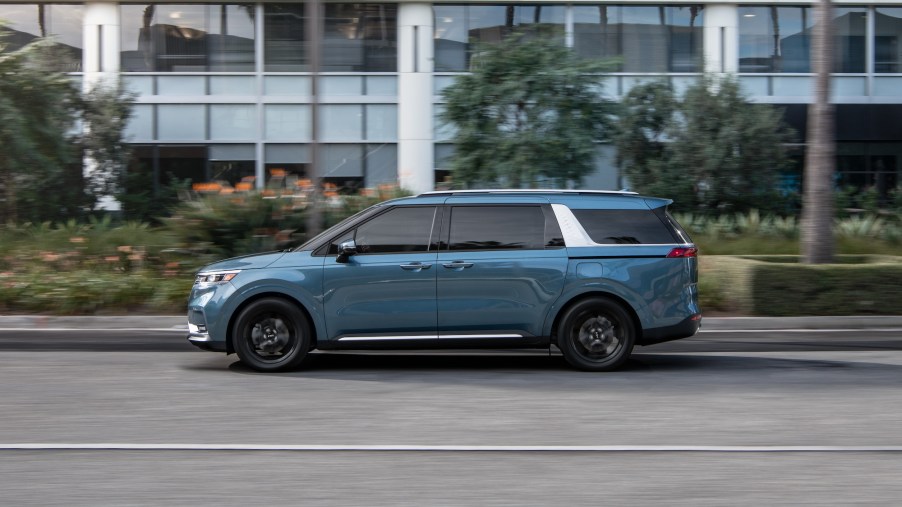
Is a Minivan Considered an SUV?
There was a time, decades ago, when the minivan was all the rage. Soccer moms and morning coffee addicts adored their minivans, and there wasn’t a family at the PTA meeting without one. But then came the sport utility vehicle, and parents began ditching their vans for muscular, four-wheel-drive SUVs.
Some say the transition was a status thing. Others point to SUVs’ versatility. But whatever the reason for the mass exodus, the minivan had to step up its game. Today’s minivans are vastly different from the family haulers of 20 years ago. And because many have the same features and capabilities as SUVs, you might wonder if modern minivans should be considered SUVs.
How minivans and SUVs are similar
You might assume the minivan and SUV are in the same class because of their similarities. Both can tow, though today’s SUVs can pull more. However, every minivan can tow 3,500 pounds.
Also, both provide three comfortable rows of seating, making them great family rides. Interior tech and infotainment features tend to be tied, too, U.S. News reports.
And even consumers interested in hybrid and EV versions can find what they need in both segments.
But is a minivan considered an SUV?
There are key differentiators between the two vehicle types that clearly separate them. MotorTrend says minivans have the advantage in cargo capacity and storage space. For instance, the Ford Expedition offers the most cargo space — 104.6 cubic feet — among SUVs. But that pales compared to even the minivan with the smallest cargo space, the Kia Sedona, with 142 cubic feet.
However, SUVs tend to boast better safety ratings than minivans. With their higher stance and better visibility, SUVs are superior at collision avoidance. And despite the increased availability of driver assists in both segments, SUVs tend to score better in IIHS and NHTSA crash tests.
Car and Driver points out that when it comes to customization options and variety, minivans don’t dominate as they did in the 1990s. And though you can expect redesigned models for 2022, you won’t have as many options and features to choose from as you will with the still-growing SUV segment. Dozens of two- and three-row SUVs offer style, comfort, and performance options you can’t find among the handful of vans.
The affordability factor might help you decide
The biggest difference between minivans and SUVs might be pricing. In the battle of average MSRP among three-row vehicles, one clear victor emerges. For instance, the popular Honda Pilot starts at $32,650. But its sibling, the Odyssey, starts at over $800 less and offers many of the same features.
Another example: The highest trim level of the family-favorite Toyota Sienna will set you back about $49,415. Compare that to the Ford Expedition, with its range of $52,810 to $80,000, and anyone on a budget would have an easy decision to make.
There’s really no verdict on which is better, the SUV or the minivan. How you determine which vehicle is best for your family will boil down to your hauling, driving, and budget preferences. But don’t mistake the minivan for an SUV because they’re still entirely different vehicles. Sure, they share similarities, but their differences draw a clear line between the two segments. And it’s those differences that will likely help you decide which to buy.


